Stalled
Obviously, we know that the Carland Imagineers initially planned for California Adventure didn’t come to be. But the reasons why may be more numerous than you think.
1) A new philosophy
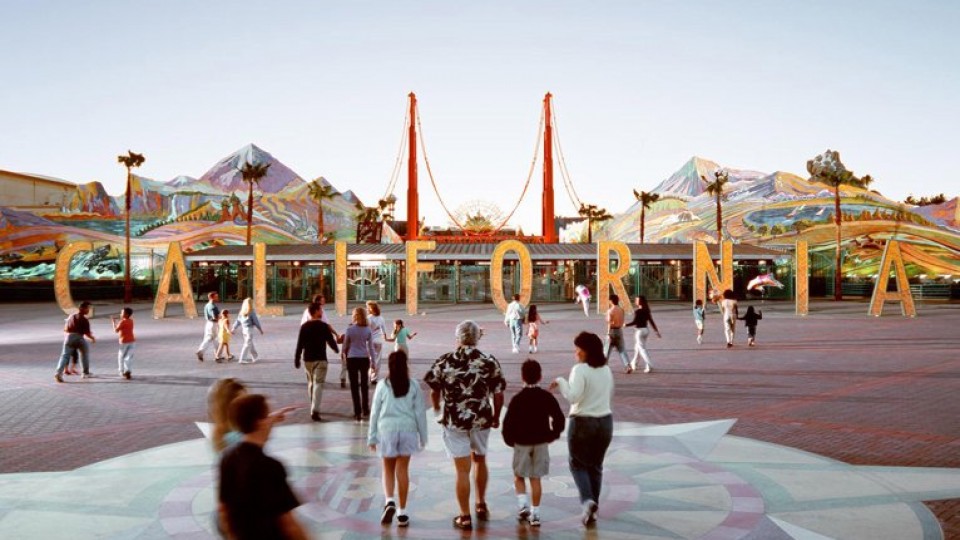
The clumsy, cartoonish representation of California that the park embodied in its early days didn’t make many fans. It’s that persistent and unfortunate undertone to the entire foundation of California Adventure that was destined to hold the park back.
In other words, it was true that the park didn’t have enough E-Tickets to justify a day away from Disneyland; it was true that California Adventure lacked the recognizable Disney characters people wanted… but even if Disney added a dozen E-Tickets and pushed cartoons into the park’s lands, it still wouldn’t fix California Adventure’s flawed concept: it’s lack of timelessness, reverence, romance and idealism that hit the park at its foundation.
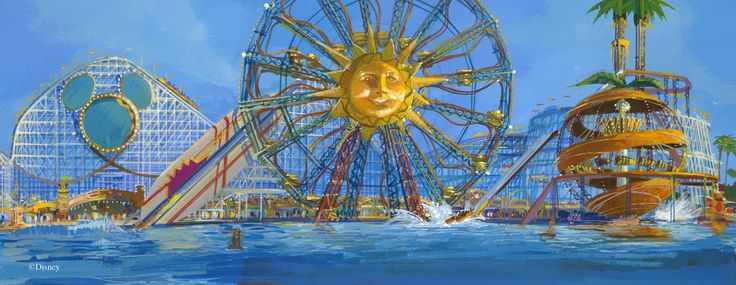
So at Imagineering, designers were tasked with making a big shift: rethinking the park at its foundation and reorienting the ship entirely. Going forward, California Adventure would need an infusion of the secret ingredients that made Disneyland so beloved. Its themed lands would need to be timeless, romantic, cinematic, and habitable rather than being cartoony spoofs of modern Californian culture.
While the mid-century styling of Carland wasn’t inherently bad, its reliance on cartoonified clutter and outlandish roadside attractions would double down on California Adventure’s flaws rather than leading the park in a new direction. Simply, Carland lacked both the reverence that the park needed and the truly-groundbreaking E-Ticket to make the park a must-see. It would’ve been just another Band-Aid on the park’s broken bone, not an anchor of a rebirth.
2) From cars to Cars
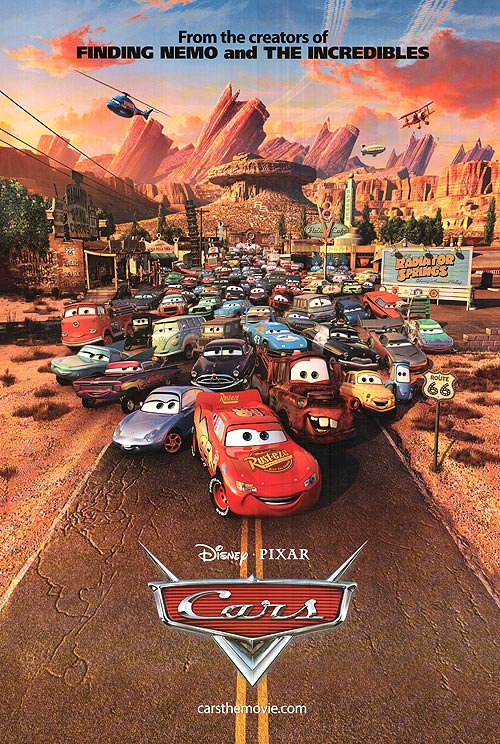
Most obviously, Disney / Pixar’s 2006 film Cars changed the game. Released in December 2006, it’s almost hard to believe how close Cars comes to fulfilling all that Carland promised, anyway, but in the more timeless, reverent, and “real” skin that California Adventure now needed.
The film takes place in a world populated exclusively by anthropomorphic cars and follows hot rod racing legend Lightning McQueen who becomes hopelessly lost on the interstate at night (his headlights are merely stickers, after all) and makes a desperate detour along Route 66. There, he stumbles upon the sleepy and washed-up town of Radiator Springs, long-since surpassed by progress with its residents relegated to rusting.
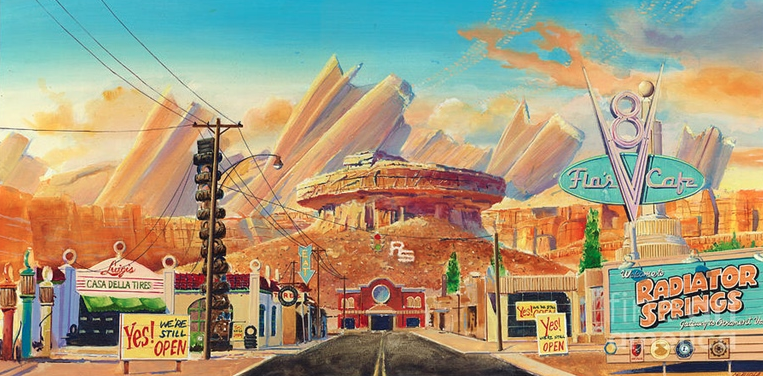
Though he initially tries to make a quick escape from the town and its Sheriff, he soon finds himself forging a connection with the washed up Doc Hudson (a Hudson Hornet, played by Paul Newman in his last film role), Mater the tow truck, Luigi (the ever-Italian 1959 Fiat 500), diner proprietor Flo, Sally (a 2002 Porsche who’s settled into the unassuming town herself) and the town’s ragtag cast of cars.
McQueen, of course, charges himself with revitalizing Radiator Springs, triumphantly ending with the town’s rebirth as a neon paradise of mid-century allure brought to shimmering life at sundown to the irresistible doo-wop tunes of The Chord’s “Sh-boom (Life Could be a Dream).”
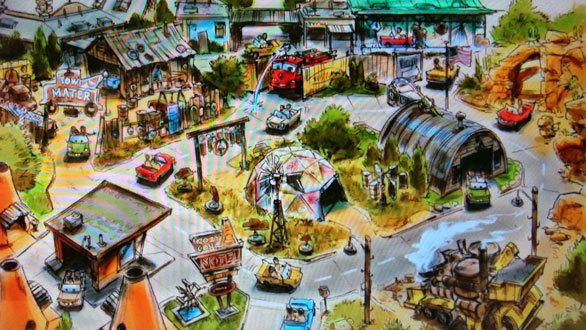
Back at Imagineering, Cars became an obvious property to include in the still-gestating Carland concept. One proposal, for example, changed Road Trip U.S.A. / Goofy About Roadtrips again to become Sally’s Road Rally, reformatting the Autopia-style journey as a trip past cars and shops from Radiator Springs.
As the land continued to develop, Cars became more and more prominent in the land, informing its style and reshaping the town and its desert mountain range backdrop.
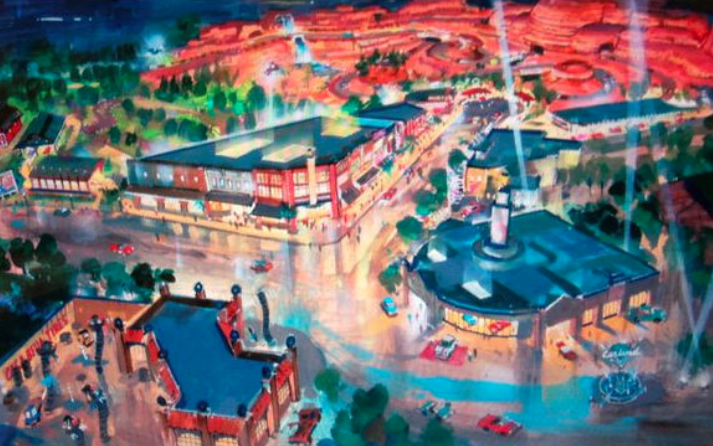
But even if Carland was increasingly borrowing from the sights and settings of Cars, it was still Carland, just as Adventureland revolves around Indiana Jones, but is still Adventureland. After all, what was the alternative? An entire land dedicated to a single movie? Unprecedented… so far.
By the way, Cars made nearly $500 million in its international theatrical run. Admittedly, that’s not much for a modern Disney film (for perspective, it puts Cars in 15th place out of Pixar’s 19 big screen releases…) but it’s important to note that Cars merchandise reportedly topped $10 billion (that’s billion with b) in the five years after its debut alone (which might also help make clear why Cars 2 and Cars 3 exist). As a general rule, kids love cars… And that would be important when a new land debuting across the country and at Disney’s competitor showed the power of merchandising…
3) The Wizarding World of Harry Potter

In May 2007, Disney’s longstanding competitor in the Orlando market – Universal Parks & Resorts – announced something big. They had secured the worldwide global rights to build attractions based on the multi-billion dollar Harry Potter film series that had enchanted a generation and become arguably one of the most recognized and enduring brands on Earth (right up there with Star Wars).
It was a coup for a number of reasons, many thanks to series author J.K. Rowling. Rowling allegedly took a wildly hands-on approach to the design of any attractions Universal would propose. Rowling required strict adherance to world-building, including the Wizarding World’s insulation from the real world beyond.
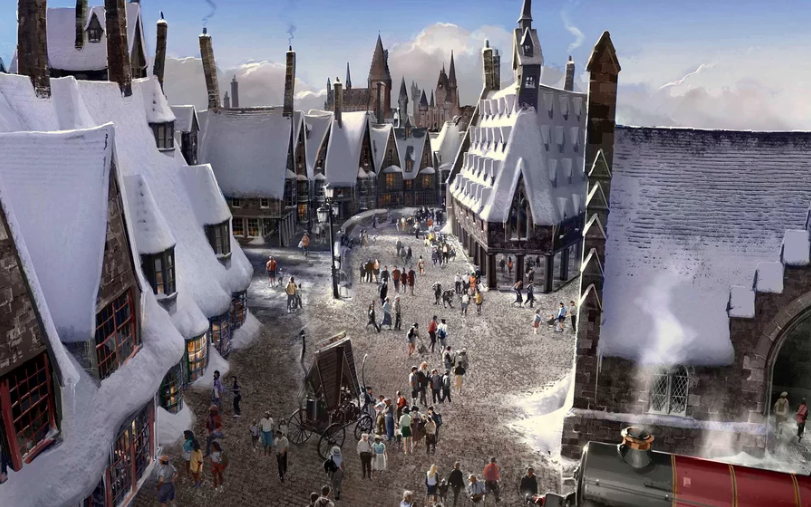
Taking Disneyland’s “berm” to the next level, guests in the Wizarding World would be wrapped in the “real” Hogsmeade village in snowy, rural Scotland. In other words, no Coca-Cola; no LEGO Hogwarts sets or Harry Potter Blu-rays; no meet-and-greets with Dumbledore lookalikes; no upsized Emporiums. Instead, the land would be a living, to-scale recreation of the world seen on screen, right down to the details. Guests would drink Butterbeer, buy wands, and become a part of the world they’d dreamed of.
The most amazing part? It worked. Disney must’ve looked on in astonishment as guests queued for hours not to ride attractions, but to get into gift shops. Fans tripped over themselves to drink Butterbeer, to eat fish and chips at the Three Broomsticks, and to purchase their own wands. The Wizarding World wasn’t just a ride or even a land. It was a world, inviting guests to become a part of the story they knew and loved, completely immersing them in a to-scale recreation of a “real” place they’d longed to visit, with every nook and cranny intact.
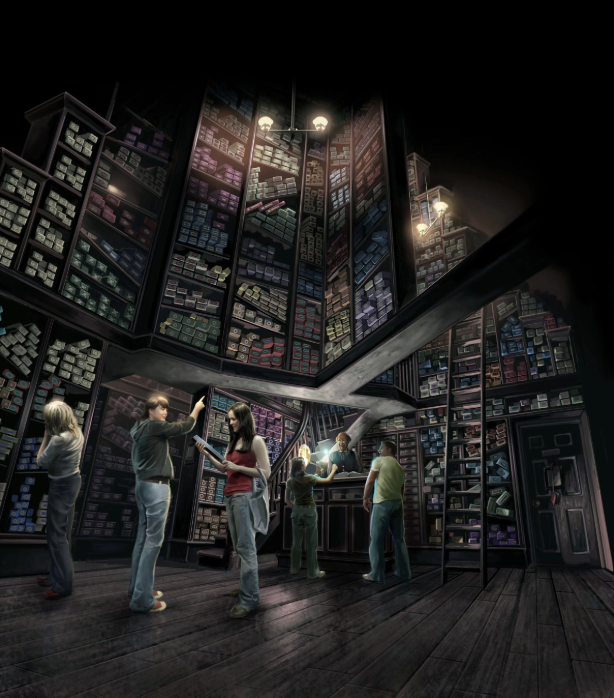
Though it’s hard to believe now, the Wizarding World was the first example of a major themed land in one of Disney or Universal’s parks that was entirely centered around a single intellectual property, and that brought the physical “world” of that story to life for guests to inhabit. As luck would have it, that formula blended very well with a merchandise-based model, as well, making it the de facto formula for theme park additions from then on, inspiring lands based on AVATAR, Star Wars, Toy Story, Ratatouille, Marvel, Frozen, Zootopia, and more.
But Disney’s first foray into UP-focused “living land” wasn’t at Walt Disney World…
Bringing it all together
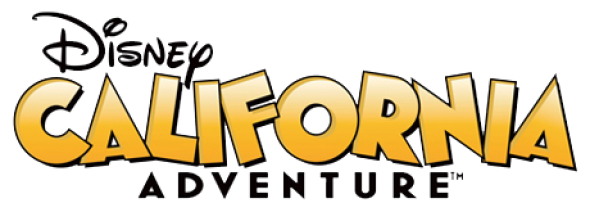
In review:
- Disney was determined to right the sinking California Adventure ship, and recognized that a foundational turn away from its “hip, irreverent, MTV attitude” and toward Disneyland’s more cinematic, stylized, reverent, and historic lands was the only path forward. E-Tickets alone were merely Band-Aids on a broken bone, and would never truly fix the park. It needed something big; a new anchor that would bring folks from around the country.
- Though Cars wasn’t Disney’s best film of the 21st century, it provided a built-in billion-dollar merchandising franchise while giving the once-proposed “Carland” a more cinematic, stylized, reverent, character-infused, and historic foundation – elements needed to align the project with the larger rewriting of California Adventure.
- The success of the Wizarding World of Harry Potter demonstrated to Disney that the next evolution of theme park design might lie in simply recreating beloved worlds so that guests could step into the scaled settings and stories they already knew and loved, and where they’d be tempted by “in-universe” food, drink, and souveniers.
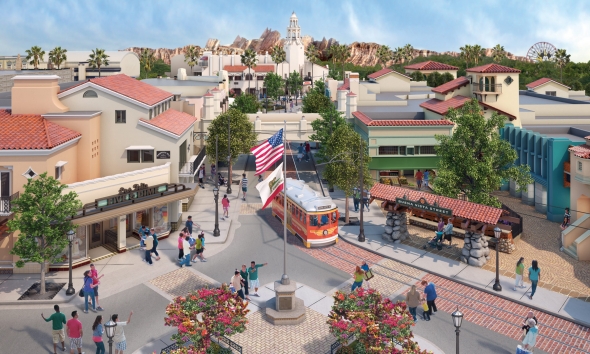
The stars had aligned. On October 17, 2007 – five months after Universal’s Wizarding World announcement – Disney made an unprecedented call of its own and did the unthinkable: they admitted defeat. CEO Bob Iger told the Washington Post, “Steve Jobs is fond of talking about brand deposits and brand withdrawals. Any time you do something mediocre with your brand, that’s a withdrawal. California Adventure was a brand withdrawal.”
Rather than chasing E-Tickets and masking the already-dated remains of the ’90s-designed California Adventure, Iger announced a $1.2 billion reconstruction effort that would systematically strip each of the park’s themed lands to its creative bolts, rebuilding them in the style of Disneyland’s – historic, indealized, romanticized versions of a 1910s boardwalk; a 1920s Los Angeles; a 1940s Hollywood; ywood; a 1950s High Sierras National Park… And as for the park’s testament to the car culture of the 1950s and ’60s?
Radiator Springs Rises
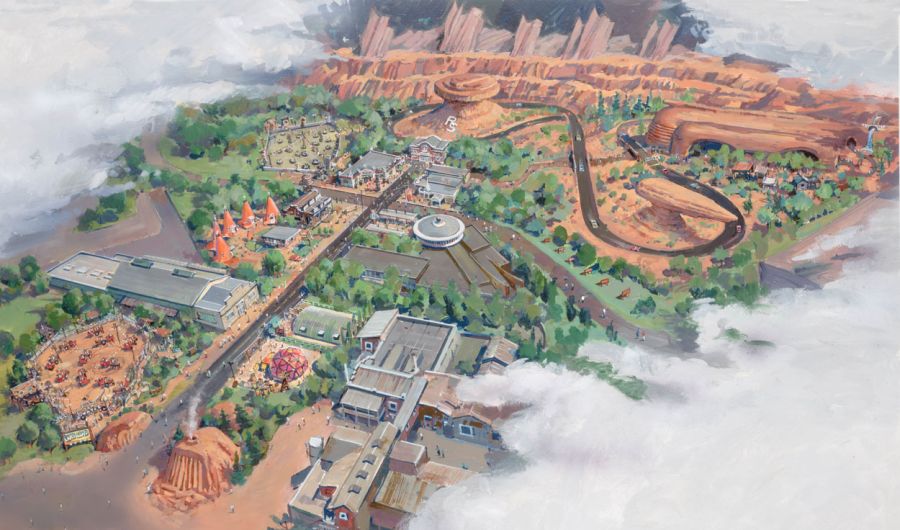
But Iger trumpeted one addition as “the big kahuna.” On July 8, 2009, asphalt was broken on the former Timon parking lot – a small slice of parking left from Disneyland’s blacktop lot of yesteryear – to become the largest single land expansion in Disney Parks history: Cars Land. Borrowing from the Wizrding World formula, Cars Land would be Disney;s first-ever land dedicated to a single IP and bringing its world from screen to park.
Not only would the land contain immersive, in-universe shopping and dining two two family flat rides embedded in the story; it would feature a sensational anchor attraction that – on the surface – might look familiar.
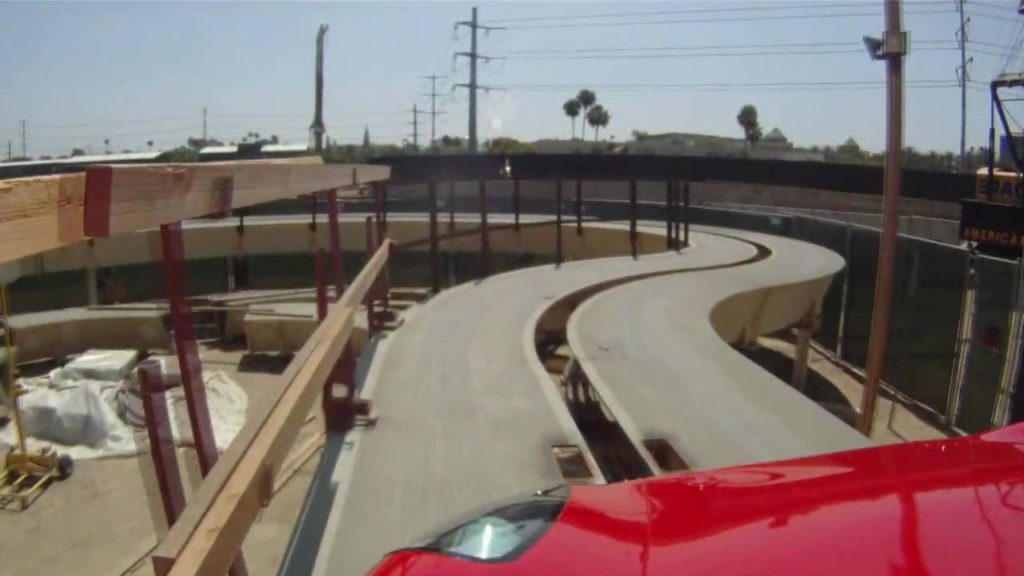
By June 2010, a cherry red car was looping around a test track. Pun intended. Imagineers were on-site as a lookalike Lightning McQueen did a month’s woth of test drives using Disney’s patented slot-car speed system pioneered back in Orlando a decade earlier. With assurances that the technology were ready to go, the final track was placed and Radiator Springs arose.
Easily one of the largest construction projects ever tackled at Imagineering, Cars Land’s scale is so massive that, like any Natural Wonder of the Theme Park World, it can’t really be translated in photos; it must be seen to be understood. With over 280,000 square feet of rock work, the stunning Ornament Valley came to life, with the twisting, hopping blacktop of a desert roadway slaloming throughout… one of Disney’s most visually stunning rides ever.
On the next page, we’ll step into the land that saved California Adventure and board its spectacular, $200 million E-Ticket through Radiator Springs. Strap in…



